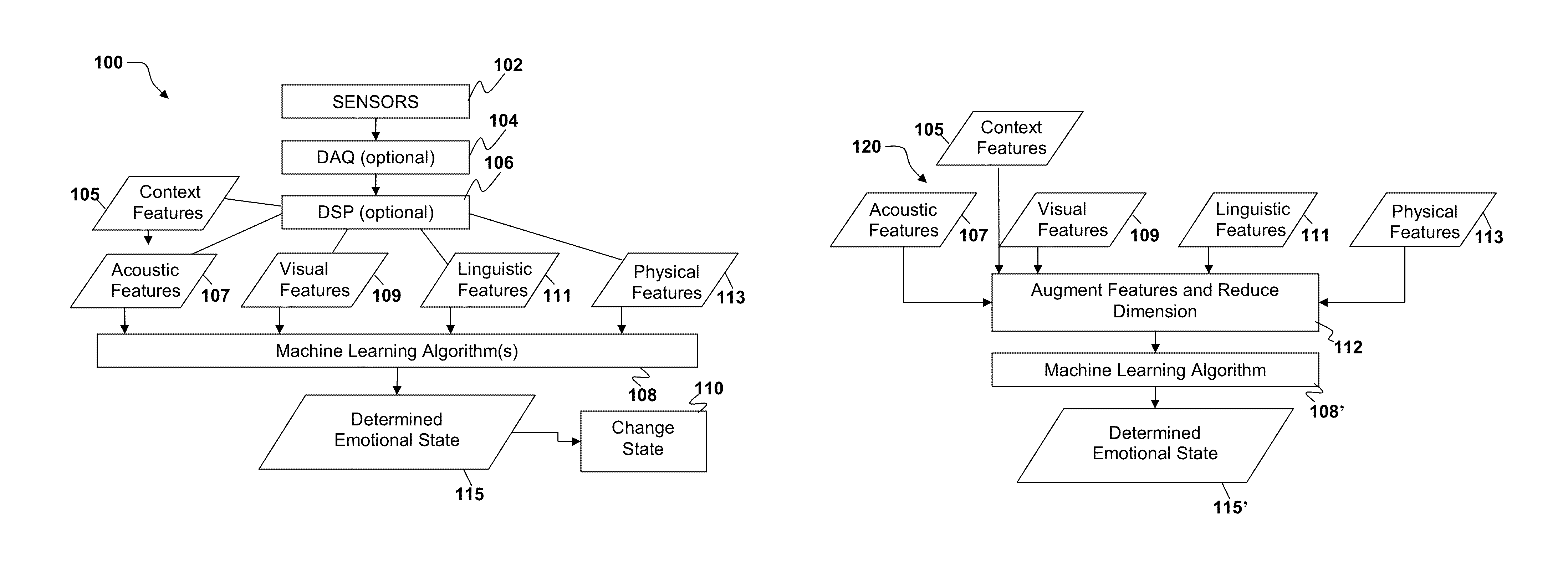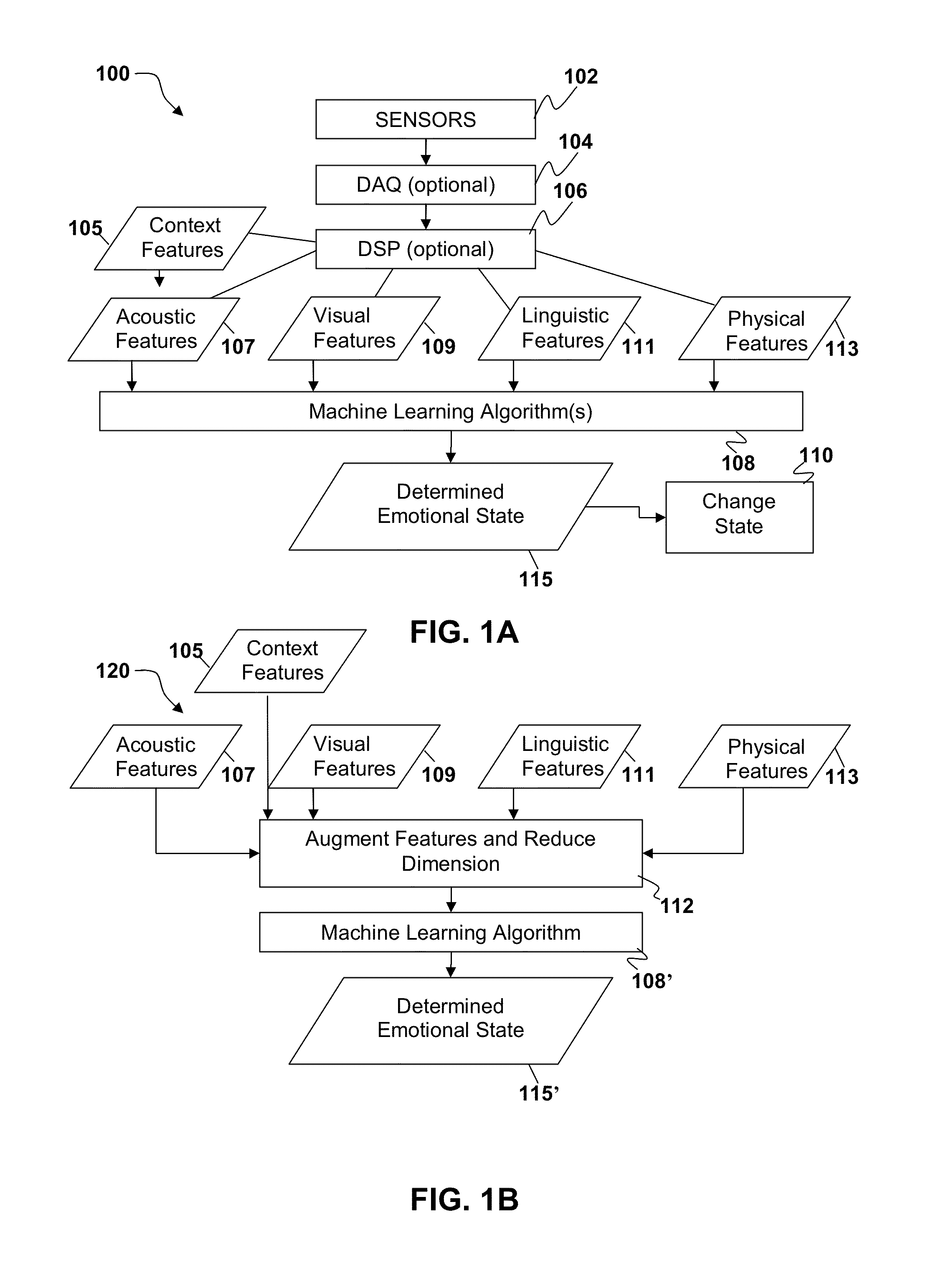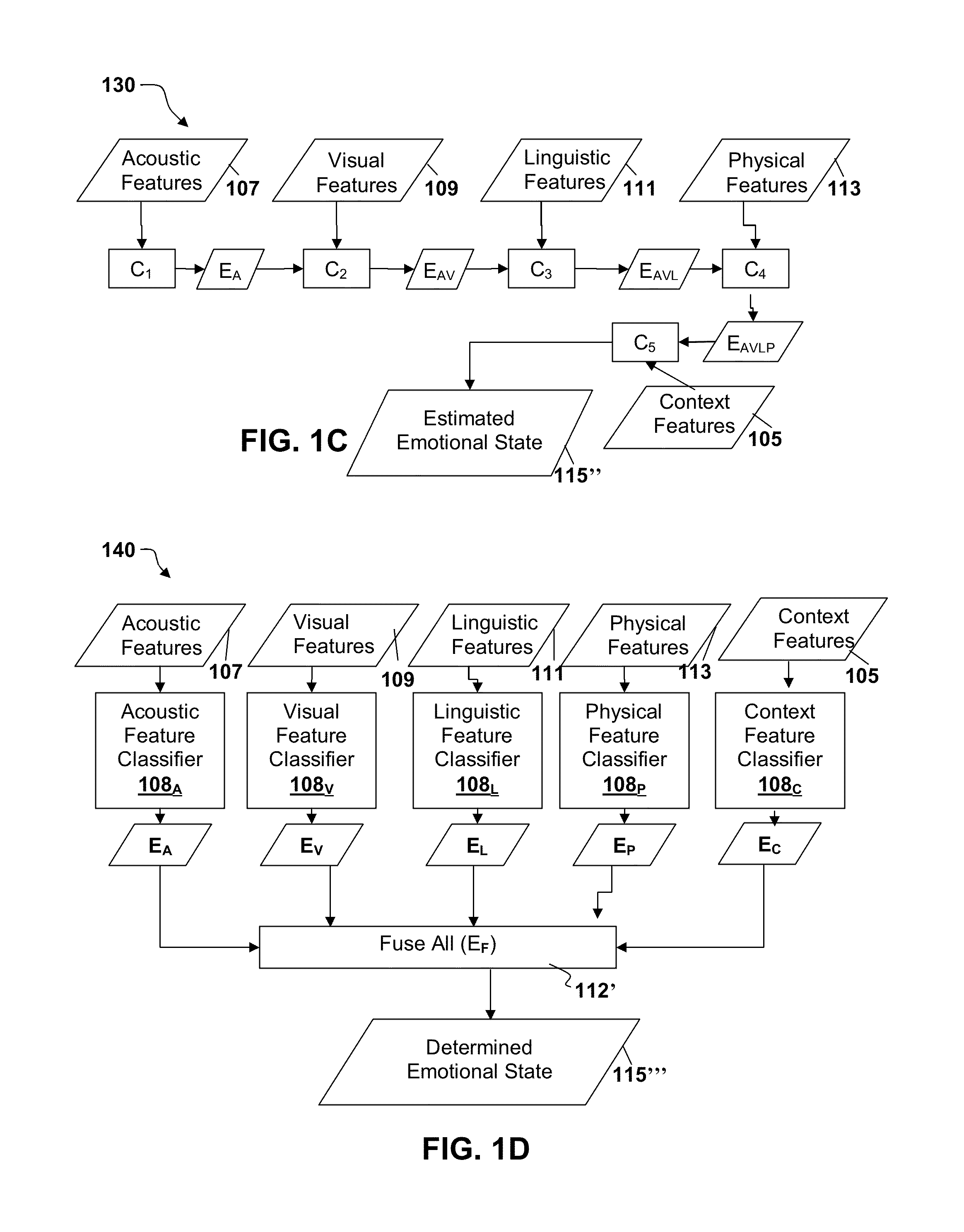Multi-modal sensor based emotion recognition and emotional interface
a sensor and emotion recognition technology, applied in the field of multi-modal sensor based emotion recognition and emotional interface, can solve the problems of low accuracy of automatic emotion recognition, easy confusion of happiness and anger
- Summary
- Abstract
- Description
- Claims
- Application Information
AI Technical Summary
Benefits of technology
Problems solved by technology
Method used
Image
Examples
Embodiment Construction
[0014]Embodiments of the present invention relate to spoken language processing methods and apparatus that use multi-modal sensors for automatic emotion recognition.
Introduction
[0015]According to aspects of the present disclosure accurate emotion recognition may be implemented using multi-modal sensory cues. By fusing multi-modal sensory data, more reliable and accurate emotion recognition can be achieved. Emotion recognition and or understanding the mood of the user is important and beneficial for many applications; including games, man-machine interfaces, and the like. For example, it can be used in a user interface to dynamically adapt the response of a game or other machine based on player's or user's emotions. The detected mood, emotional state, stress level, pleasantness, etc. of the user may be used as an input to the game or other machine. If the emotional state of the user or game player is known, a game or machine can dynamically adapt accordingly. For example, in a simple...
PUM
 Login to View More
Login to View More Abstract
Description
Claims
Application Information
 Login to View More
Login to View More - R&D
- Intellectual Property
- Life Sciences
- Materials
- Tech Scout
- Unparalleled Data Quality
- Higher Quality Content
- 60% Fewer Hallucinations
Browse by: Latest US Patents, China's latest patents, Technical Efficacy Thesaurus, Application Domain, Technology Topic, Popular Technical Reports.
© 2025 PatSnap. All rights reserved.Legal|Privacy policy|Modern Slavery Act Transparency Statement|Sitemap|About US| Contact US: help@patsnap.com



